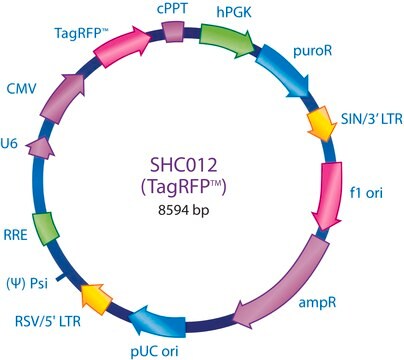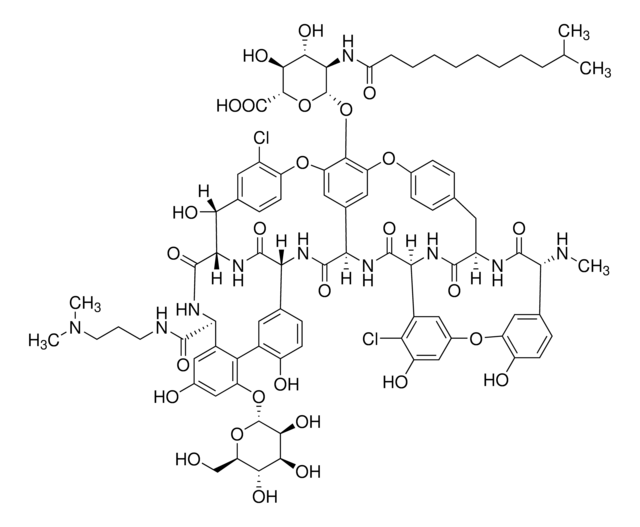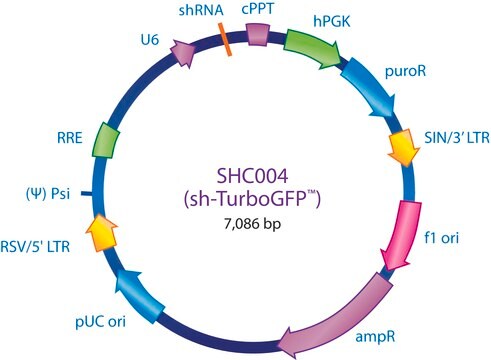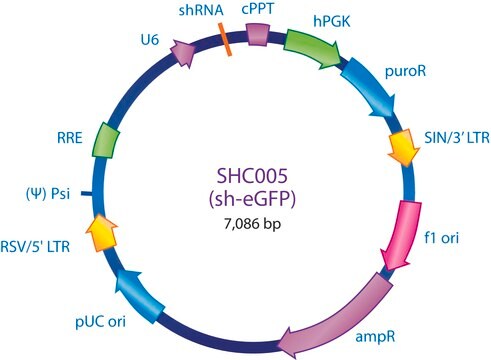SHC012V
MISSION® pLKO.1-puro-CMV-TagRFP™ Positive Control Transduction Particles
Contains a gene encoding TagRFP
Synonyme(s) :
MISSION®, MISSION® Control Transduction Particles
About This Item
Produits recommandés
Niveau de qualité
Gamme de produits
MISSION®
Concentration
≥1x106 VP/ml (via p24 assay)
Technique(s)
capture ELISA: 106 TU/mL using p24
Conditions d'expédition
dry ice
Température de stockage
−70°C
Vous recherchez des produits similaires ? Visite Guide de comparaison des produits
Catégories apparentées
Description générale
To see more application data, protocols, vector maps visit sigma.com/shrna.
Application
This construct aids in interpretation of experimental design and results by providing a red fluorescent protein marker for monitoring success in transduction of your cells of interest.
Informations légales
En option
Code de la classe de stockage
12 - Non Combustible Liquids
Classe de danger pour l'eau (WGK)
WGK 3
Point d'éclair (°F)
Not applicable
Point d'éclair (°C)
Not applicable
Faites votre choix parmi les versions les plus récentes :
Certificats d'analyse (COA)
Vous ne trouvez pas la bonne version ?
Si vous avez besoin d'une version particulière, vous pouvez rechercher un certificat spécifique par le numéro de lot.
Déjà en possession de ce produit ?
Retrouvez la documentation relative aux produits que vous avez récemment achetés dans la Bibliothèque de documents.
Notre équipe de scientifiques dispose d'une expérience dans tous les secteurs de la recherche, notamment en sciences de la vie, science des matériaux, synthèse chimique, chromatographie, analyse et dans de nombreux autres domaines..
Contacter notre Service technique








